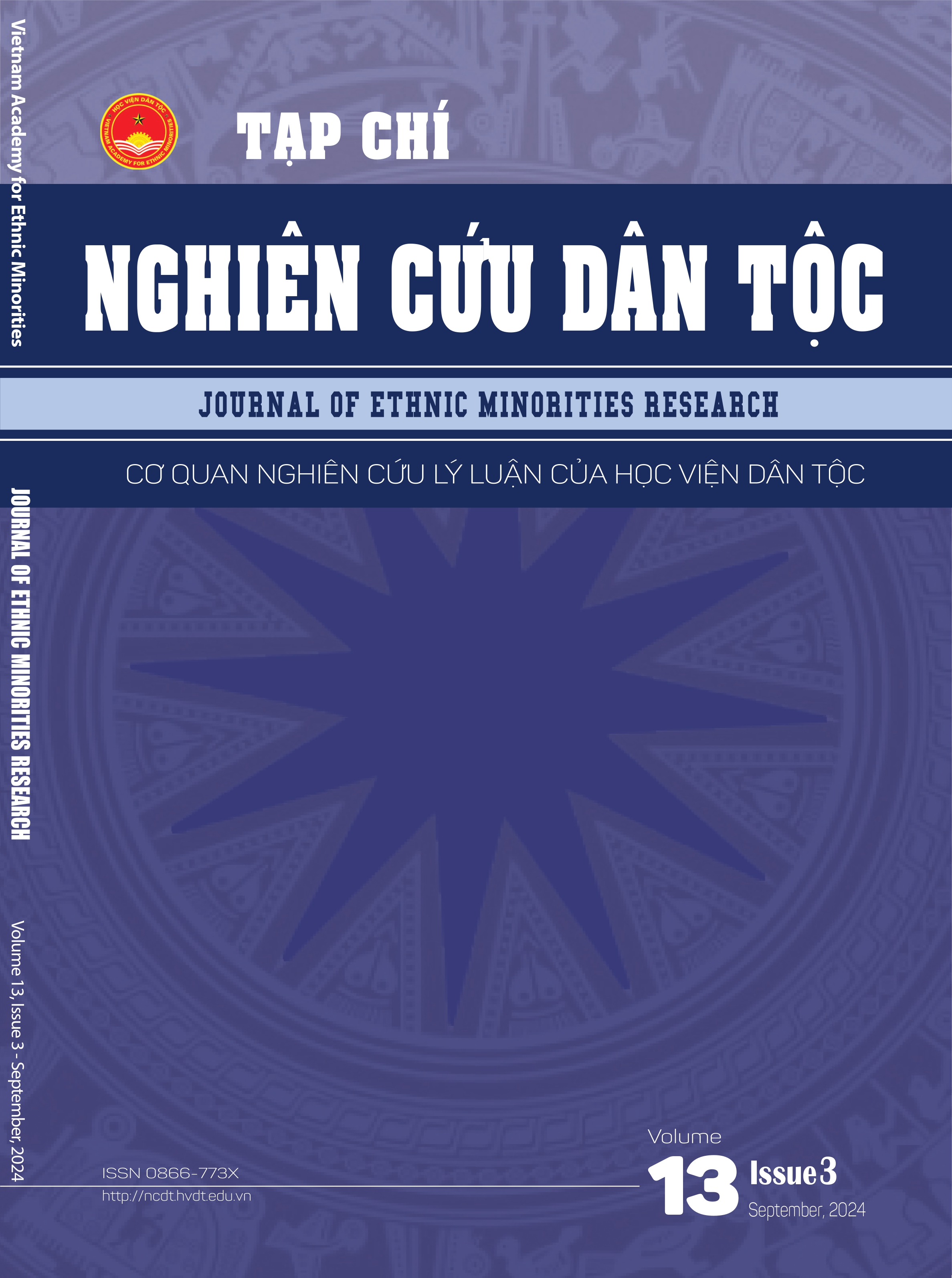INCLUSIVE ECONOMIC GROWTH AND THE POVERTY TRAP IN VIETNAM
DOI:
https://doi.org/10.54163/ncdt/318Abstract
This article focuses on analyzing the relationship between economic growth model and poverty situation in Vietnam. Through a synthesis of fundamental theories of inclusive growth and empirical evidence on poverty traps, the research shows that: (i) Despite achieving high and impressive growth rates, the inclusiveness of Vietnam's growth model is still limited, as shown by the fact that a segment of the population is still left behind; (ii) The persistence of poverty and inequality of opportunity is a significant challenge, with the risk of creating “poverty traps” that make it difficult for the poor to escape poverty sustainably; (iii) To fully address this issue, there needs to be a strong shift to a more inclusive growth model, focusing on creating good jobs, improving access to basic social services and strengthening the social security system for the poor, alongside policies to promote productivity growth. From there, the research also proposes some specific policy recommendations to realize inclusive growth and sustainable poverty reduction.
References
Ali, I., & Son, H. H. (2007). Measuring inclusive growth. Asian Development Review, 24 (1), p.11-31.
Azariadis, C., & Stachurski, J. (2005). Poverty traps. In P. Aghion & S. N. Durlauf (Eds.), Handbook of Economic Growth (Vol. 1, p. 295-384). Elsevier.
Barrett, C. B., & Carter. , M. R. (2013). The economics of poverty traps and persistent poverty: Empirical and policy implications. Journal of Development Studies, 49 (7), p.976-990.
Baulch, B., & Vu, H. D. (2011). Poverty dynamics in Vietnam, 2002 to 2006. In B. Baulch (Ed.), Why Poverty Persists: Poverty Dynamics in Asia and Africa (pp. 219-254). Edward Elgar Publishing.
Bourguignon, F. (2004). The poverty-growth-inequality triangle (Indian Council for Research on International Economic Relations, New Delhi Working Papers No. 125).
Bowles, S., Durlauf, S. N., & Hoff, K. (Eds). (2006). Poverty traps. Princeton University Press.
Carter, M. R., & Barrett, C. B. (2006). The economics of poverty traps and persistent poverty: An asset-based approach. Journal of Development Studies, 42 (2), p.178-199.
Giang, L. T., & Yoke, W. H. (2012). Household welfare and pricing of rice: Does the Large-Scale Field Model matter for Vietnam. Journal of Vietnamese Studies, 7 (4), p.32-51.
Kuznets, S. (1955). Economic growth and income inequality. The American Economic Review, 45 (1), p.1-28.
Ngân hàng Thế giới. (2022). Từ chặng đường cuối đến chặng đường kế tiếp - Đánh giá thực trạng nghèo và bình đẳng của Việt Nam năm 2022. Ngân hàng Thế giới.
Nguyên, C. V., Phạm, N. M., & Vương, N. H. (2015). Economic reforms, inequality, and growth in Vietnam. Journal of Southeast Asian Economies, 32 (2), p.211-233.
Ostry, J. D., Berg, A., & Tsangarides, C. G. (2014). Redistribution, inequality, and growth (IMF Staff Discussion Note SDN/14/02). International Monetary Fund.
Pham, T. H., & Le, T. T. (2022). The impact of COVID-19 on inequality and poverty in Vietnam. Journal of the Asia Pacific Economy, 27 (1), p.1-17.
Ravallion, M. (2012). Why don't we see poverty convergence. American Economic Review, 102 (1), p.504-23.
Ravallion, M., & Chen, S. (2003). Measuring pro-poor growth. Economics Letters, 78 (1), p.93-99.
Rauniyar, G., & Kanbur, R. (2010). Inclusive development: Two papers on conceptualization, application, and the ADB perspective. Asian Development Bank.
Tổng cục Thống kê Việt Nam. (2021). Niên giám thống kê 2020. Hà Nội: Nxb. Thống kê.
World Bank. (2009). What is Inclusive Growth. World Bank.
Zhuang, J., & Ali, I. (2010). Poverty, inequality, and inclusive growth in Asia. In J. Zhuang (Ed.), Poverty, Inequality, and Inclusive Growth in Asia: Measurement, Policy Issues and Country Studies (p.1-32). Anthem Press.


